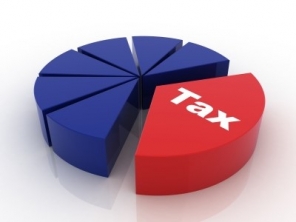Personal Tax Planning Opportunities
1. Negative Gearing and Property
By definition, negative gearing is where you borrow to acquire an income producing asset and the interest and other tax deductible costs you incur exceed the income you receive from the investment. Negative Gearing isn't suitable for all investors and the tax benefits should not be the only reason for the property purchase. Although it can lower your tax liability, the tax implications will depend on your personal situation and the type of investment you choose. As the description implies, negative gearing means a negative cashflow that you need to fund from other income sources.
interest and other tax deductible costs you incur exceed the income you receive from the investment. Negative Gearing isn't suitable for all investors and the tax benefits should not be the only reason for the property purchase. Although it can lower your tax liability, the tax implications will depend on your personal situation and the type of investment you choose. As the description implies, negative gearing means a negative cashflow that you need to fund from other income sources.
Creating wealth through purchasing an investment property is a well established practice in this country, however, negative gearing can also apply to other types of income producing investments such as shares and managed funds. The attraction of borrowing or ‘gearing' is that you can invest in shares or property that might otherwise have been unaffordable. For individuals, the loss can also be offset against other assessable income and the tax benefit will depend on your marginal tax rate.
The real benefits of negative gearing are only realized when you combine the correct tax and financial advice with a property in the right location funded by the most suitable loan product. You should always seek expert professional advice to make sure the purchase is within your budget and will provide long term taxation and financial benefits.
The Risks
While gearing can amplify your gains, it can also magnify your losses. For example, it is estimated that the 2008 US sub-prime lending crisis left close to 30% of mortgagees with a loan balance higher than the value of their property.
If you negatively gear property, you need to understand some important points:
- Investing in property is usually a medium to long term investment and requires planning. Extra caution must be exercised when a property is projected to generate a negative cash flow for a number of years.
- Properties are expected to generate profits only through Capital Gains and there is no guarantee that the value of the property will appreciate enough during the holding period to cover your losses.
- You have to remember that the family home is a purchase from the heart while an investment property needs to be a purchase from the head. You've heard the old saying that the three most important things when buying a property are: ‘location, location, location' and this is even more important when buying an investment property.
The Tax Consequences
Negative gearing of a rental property can be complex. For example, some expenses are not deductible (stamp duty, initial repairs etc.) while other expenses such as borrowing costs and depreciation are generally claimed over a number of years. As such, the right taxation advice can nearly be as important as finding the right property. To broadly illustrate how negative gearing works let's assume you buy a flat or unit for $400,000 in your personal name and borrow $350,000 to fund the purchase. The funds are borrowed at an interest rate of 8% and the weekly rent is $450 or $23,400 a year. Ongoing costs including agent's fees at 7% of the rent, rates, insurance, repairs and maintenance and other expenses are summarised below:
Sample Property Profit & Loss Statement
| Rental Income - 52 Weeks @ $450 Expenses - Interest - $350,000 @ 8% - Water Rates Council Rates - Insurance - Repairs & Maintenance - Agents Commission - 7% of $23,400 - Bank Charges - Body Corporate Fees TAX LOSS |
$ 28000 968 1282 900 600 1638 12 1000 --------- |
23400 34400 ---------- $ 11000 |
This relatively simple example suggests, after expenses the net income for the year will be $17,000 ($23,400 minus $6,400), equivalent to a net rental yield of 4.25%. However, annual interest repayments are $28,000, so the tax deductible loss is $11,000 for the year ($23,400 minus $34,400 = -$11,000).
Assuming you own the property in your own name, the loss will reduce your taxable income by $11,000 and if you had a taxable income greater than $180,000 in the 2015 financial year, the after tax cost of owning the property would only be $5,885 or $113.17 per week (based on a marginal tax rate of 46.5%). If you were on a lower marginal rate of tax of say 31.5% (including Medicare levy) the after tax cost would be $7,535 (or $144.90 per week).
2. Medical Expense Offset
 The net Medical Expense Offset is being phased out over the next few years and will cease on 30 June 2019. Eligibility rules have changed and only taxpayers with out-of-pocket medical expenses relating to disability aids, attendant care or aged care expenses or eligible. You must also have received the offset in your 2015/16 income tax return to claim the offset this year.
The net Medical Expense Offset is being phased out over the next few years and will cease on 30 June 2019. Eligibility rules have changed and only taxpayers with out-of-pocket medical expenses relating to disability aids, attendant care or aged care expenses or eligible. You must also have received the offset in your 2015/16 income tax return to claim the offset this year.For those eligible, where your income is less than $90,000 for individuals or $180,000 (plus $1,500 for each dependent child) for couples or families, your net out of pocket medical expenditure in excess of $2,162 is subject to a rebate of 20%. Where your income is above these thresholds, a rebate of 10% of your net out of pocket medical expenditure above $5,000 will be claimable.
The offset applies to expenditure actually paid during the year so if you qualify it could be prudent to pay any outstanding medical expenses prior to 30th June 2017.
3. Pay As You Go Withholding (PAYGW) Variation
If you are an employee, your employer is obligated to deduct PAYG Withholding Tax from your regular salary. Assuming that your employer has withheld the correct PAYGW, when you lodge your tax return (and assuming you have minimal other income or tax deductions) there should be very little, if any, tax payable or refundable. However, where you have significant tax deductible expenses such as a net loss on your negatively geared investment property, you may be entitled to a significant tax refund.
In this case it might be advantageous to vary the amount of the PAYGW tax that is deducted from your regular pay so you get the benefit of the large tax refund progressively through the year. This is achieved by lodging a PAYGW variation with the ATO. Once processed by the ATO, your employer is authorised to reduce the amount of the tax withheld from your regular salary and wages so you effectively receive more money each pay day rather than waiting until the end of the year for your lump sum tax refund.
The PAYGW variation for the year ending 30 June 2018 can be lodged now to take effect from the first pay of the new financial year. Please contact our office if you would like to apply for a PAYGW variation.
4. Changes to ATO Processes for Assessments and Activity Statements
The Australian Taxation Office has made changes in relation to issuing Tax Refunds, Business Activity Statements and Instalment Activity Statements which will have an impact on the processing of these documents in the future. In relation to refunds on Assessment Notices, the Australian Taxation Office now require that all refunds be forwarded directly to a bank account. Accordingly, you must now provide details of the bank account you want your refund to be paid into on your Income Tax Return. As the refunds will be paid directly to your nominated bank account it will eliminate the process of sending out refund cheques and streamline the process.
In relation to Business and Instalment Activity Statements, the Australian Taxation Office has advised that they will only issue paper statements to taxpayers who lodge their activity statements in a paper form. For those taxpayers that lodge their statements in an Electronic Form (whether directly or through their Tax Agent) the statements will be sent electronically to the lodging party. Accordingly, where you have historically relied on the paper form to commence the preparation of the Activity Statement, but they have been lodged electronically by our office, you will no longer be able to rely on the receipt of these paper forms.
Other 2016 Year End Tax Planning Opportunities
- Back to the overview of the 2016 Year End Tax Planning Guide
- Pre June 30 Tax Minimisation Strategies
- Other Tax Effective Strategies
- Changes in Tax Rates
- Accelerated Depreciation Write Off
- Other Year End Tax Reminders
- Personal Tax Planning Opportunities
- Superannuation Tax Planning Opportunities
Disclaimer: This newsletter contains general information only. Regrettably, no responsibility can be accepted for errors, omissions or possible misleading statements or for any action taken as a result of any material in this guide. It is not designed to be a substitute for professional advice, as such a brief guide cannot hope to cover all circumstances and conditions applying to the law as it relates to these items.














